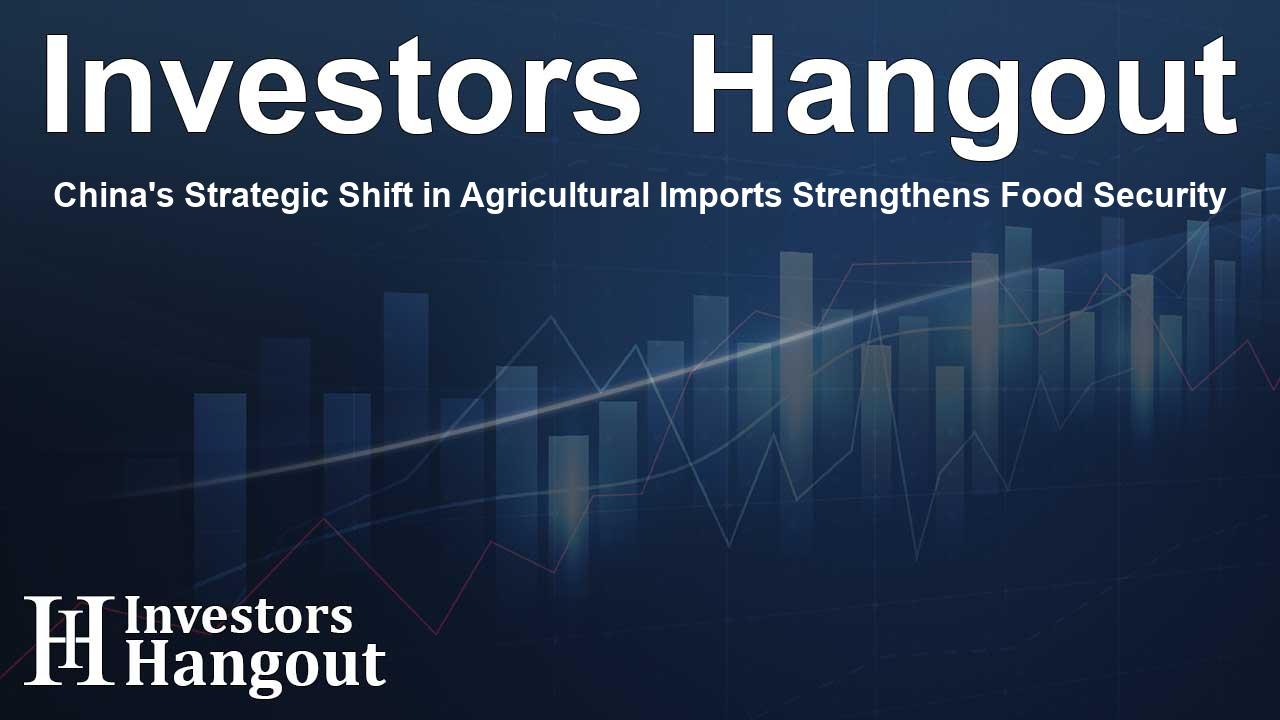China's Strategic Shift in Agricultural Imports Strengthens Food Security

China's Strategic Shift in Agricultural Imports
China has been making significant changes in its approach to food imports since 2018, which now puts it in a stronger position amidst potential trade conflicts with the United States. As the world's largest importer of agricultural products, including soybeans and corn, China is adapting its strategy to minimize the impact of U.S. tariffs and to bolster its food security.
The Landscape of U.S.-China Trade Relations
As tensions rise over trade, particularly with presidential candidates voicing strong policies on tariffs, China’s shift away from American farm imports is notable. With one candidate proposing up to 60% tariffs on Chinese goods to favor U.S. manufacturing, it's clear that agricultural trade could be heavily impacted, especially considering past conflicts between the two nations over tariffs.
Evolution of China's Import Sources
China's pivot away from U.S. agricultural products took shape after imposing 25% tariffs on imports of U.S. goods like soybeans and pork. This response was a direct retaliation to prior U.S. tariffs that affected $300 billion in Chinese exports. The shift has since transformed global agriculture trade dynamics, as China lessens its dependency on U.S. imports while aggressively pursuing purchases from countries like Brazil, Argentina, Ukraine, and Australia.
Impact on Agricultural Suppliers
As a result of these changes, China's soybean imports from the U.S. now account for only 18%, a significant drop from 40% just a few years prior. Brazil has claimed a larger share of the market, with its exports rising to meet China’s demand. Recently, Brazil successfully positioned itself as the primary supplier of corn, marking a clear shift in sourcing strategies for Chinese agricultural needs.
Shifting Consumption Patterns
In tandem with these import changes, Chinese livestock companies are modifying their feed strategies, reducing reliance on soymeal. This adaptation is aimed at boosting self-sufficiency in soybean and grain production, further insulating China from external supply shocks.
China's Preemptive Measures
In light of the unpredictable nature of post-election U.S. trade policies, Chinese buyers are proactively increasing their agricultural imports. Recent reports indicate a rise in purchases of American soybeans and corn, alongside significant increases in barley and sorghum imports. These strategic imports are meant to prepare China for any potential trade disruptions.
The Importance of Stockpiling
Traders note that with China well-stocked on essential agricultural goods, it has created a buffer that allows them time to plan and change purchase strategies without experiencing immediate supply shocks. With U.S. soybean export premiums reaching their highest level in over a year, China’s timing in acquiring these products appears strategic.
Challenges for U.S. Farmers
Despite current conditions, U.S. farmers remain apprehensive about future trade policies. Polls indicate a close race between presidential candidates, raising concerns about the repercussions of another trade war. Past agricultural tariffs have had severe impacts, and there is apprehension that any new tariffs could be profoundly detrimental to U.S. soybean producers, who rely heavily on exports to China.
The Consequences of Additional Tariffs
With soybean and corn prices at near historical lows, the agricultural community is wary. Farmers like Mark Tuttle express concern that increased tariffs would jeopardize their ability to compete in a global marketplace filled with competitors in South America. The reliance on a single market poses risks, and diversifying may be a crucial strategy for long-term stability.
Conclusion: Looking Ahead
The evolving landscape of China’s agricultural imports reflects a complex interplay of market demands, geopolitical tensions, and strategic necessities. As China continues to bolster its food security, the ramifications will reverberate through the global agricultural sector, impacting farmers and producers worldwide as they navigate an uncertain future.
Frequently Asked Questions
What is the significance of China's shift in agricultural imports?
China's shift allows it to reduce reliance on U.S. farm products and improve food security, especially amid potential trade tensions.
How have U.S. tariffs affected China’s agricultural imports?
The tariffs have prompted China to diversify its sources for agricultural products, seeking alternatives from countries like Brazil and Argentina.
What are the predictions for U.S. farmers as election approaches?
U.S. farmers are concerned that new trade policies and tariffs could negatively impact their exports to China and overall market stability.
Why is China increasing agricultural imports ahead of elections?
China is anticipating potential trade conflicts and aims to stockpile essential agricultural products to safeguard against supply disruptions.
What strategies are Chinese livestock companies adopting?
Chinese livestock companies are reducing soymeal in animal feed and focusing on increasing domestic production through approved genetically modified crops.
About Investors Hangout
Investors Hangout is a leading online stock forum for financial discussion and learning, offering a wide range of free tools and resources. It draws in traders of all levels, who exchange market knowledge, investigate trading tactics, and keep an eye on industry developments in real time. Featuring financial articles, stock message boards, quotes, charts, company profiles, and live news updates. Through cooperative learning and a wealth of informational resources, it helps users from novices creating their first portfolios to experts honing their techniques. Join Investors Hangout today: https://investorshangout.com/
Disclaimer: The content of this article is solely for general informational purposes only; it does not represent legal, financial, or investment advice. Investors Hangout does not offer financial advice; the author is not a licensed financial advisor. Consult a qualified advisor before making any financial or investment decisions based on this article. The author's interpretation of publicly available data shapes the opinions presented here; as a result, they should not be taken as advice to purchase, sell, or hold any securities mentioned or any other investments. The author does not guarantee the accuracy, completeness, or timeliness of any material, providing it "as is." Information and market conditions may change; past performance is not indicative of future outcomes. If any of the material offered here is inaccurate, please contact us for corrections.









